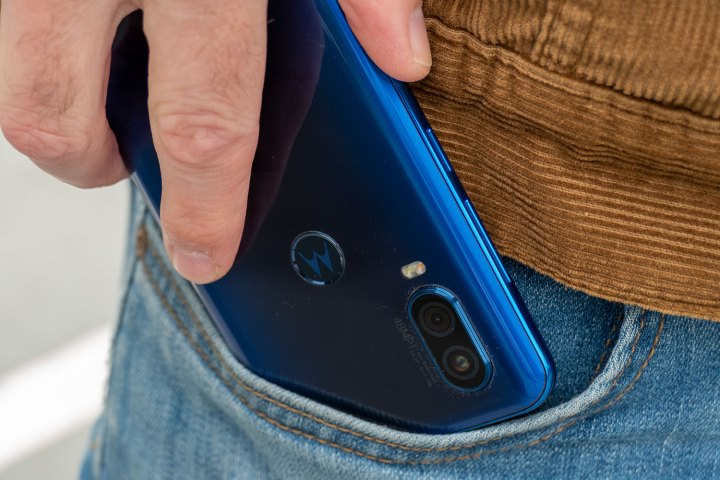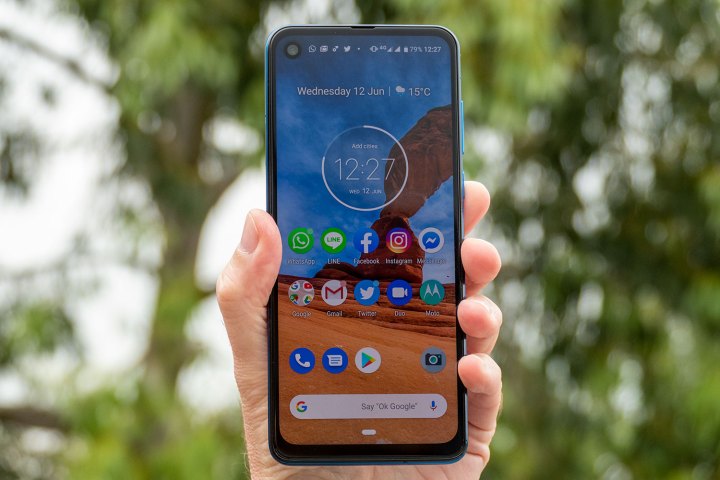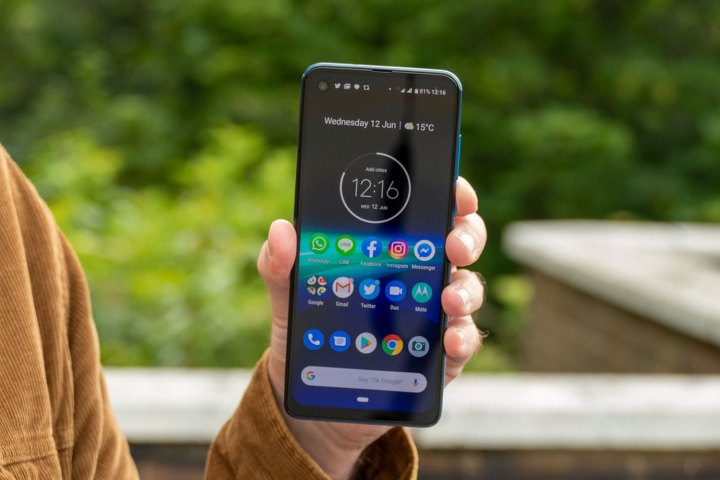
The Motorola One Vision offers a large display, an impressive dual-lens 48-megapixel and 5-megapixel camera, and a big battery at a very tempting price. It also runs pure Android as Google intended, with a guarantee it will be updated in a timely fashion. It looks like a lot for not much more than the cost of a Moto G7, so should you bite? Read on for a complete breakdown of these two Motorola phones and find out which is the right one for you.
Specs
| Motorola One Vision | Moto G7 | |
| Size | 160.1 × 71.2 × 8.7 mm (6.3 × 2.8 × 0.34 inches) | 157 × 75.3 × 8mm (6.18 × 2.96 × 0.31 inches) |
| Weight | 180 grams (6.35 oz) | 172 grams (6.06 ounces) |
| Screen Size | 6.3-inch IPS LCD | 6.2 inch MaxVision LCD |
| Screen resolution | 2,520 × 1,080 pixels (432 pixels per inch) | 2,270 × 1,080 pixels (403 pixels-per-inch) |
| Operating system | Android 9.0 Pie | Android 9.0 Pie |
| Storage space | 128GB | 64GB |
| MicroSD card slot | Yes | Yes |
| Tap-to-pay services (NFC) | Google Pay | No |
| Processor | Samsung Exynos 9610 | Qualcomm Snapdragon 632 |
| RAM | 4GB | 4GB |
| Camera | Dual lens 48-megapixel and 5MP rear, 25MP front | Dual 12-megapixel and 5MP main camera, 8MP front |
| Video | 2,160p at 30 fps, 1,080p at 60 fps | 2,160p at 30 fps, 1,080p at 60 fps |
| Bluetooth version | Bluetooth 5.0 | Bluetooth 4.2 |
| Ports | USB-C, 3.5mm headphone jack | USB-C, 3.5mm headphone jack |
| Fingerprint sensor | Yes (back) | Yes (back) |
| Water resistance | IP52 | Water-repellent coating |
| Battery | 3,500mAh
Fast charging 15W |
3,000mAh
Fast charging 15W |
| App marketplace | Google Play Store | Google Play Store |
| Network support | TBA | T-Mobile, AT&T, Verizon, Sprint |
| Colors | Bronze, Sapphire | Ceramic Black, Clear White |
| Price | 299 euros (around $335) | $300 |
| Buy from | Motorola | Walmart |
| Review score | 3.5 out of 5 stars | 4 out of 5 stars |
Performance, battery life, and charging

It’s interesting to see Motorola opt for a Samsung Exynos 9610 processor in the One Vision. It’s a midrange chip, just like the Snapdragon 632 in the Moto G7, but the Samsung processor has a higher clock speed, and should be better at pushing graphics and processing images. Based on benchmarks, the Samsung chip is superior. Both devices have an ample 4GB of RAM. The One Vision also offers 128GB of storage to the G7’s 64GB and both have MicroSD card slots.
The Motorola One Vision also wins out in the battery department with an extra 500mAh of capacity over the 3,000mAh battery in the
Winner: Motorola One Vision
Design and durability
- 1. Motorola One Vision
The Motorola One Vision is taller and fatter than the
The
While the
Winner: Motorola One Vision
Display

Both phones have LCD screens, but the 6.3-inch display in the Motorola One Vision boasts a 2,520 x 1,080-pixel resolution that works out to 432 pixels per inch (ppi), which is sharper than the
Winner: Motorola One Vision
Camera

Perhaps the biggest difference between these two phones on paper is the camera. The Motorola One Vision has a dual-lens setup that pairs a 48-megapixel lens with a 5-megapixel lens. It actually produces 12-megapixel photos, but thanks to a technique called pixel binning the clarity should be far superior to the
It’s a similar story around the front, where the One Vision boasts a 25-megapixel camera and the
Winner: Motorola One Vision
Software and updates

We’ve been pretty impressed with Motorola’s budget Android smartphone lineup, but the reason that the
Right now the software experience is going to be very similar, but our concerns about how often the
Winner: Motorola One Vision
Special features

The standout features for the One Vision include the various A.I. and image processing smarts in the camera, the fact it runs
Winner: Motorola One Vision
Price and availability
The Moto G7 costs $299 and it’s widely available in the U.S. direct from Motorola or from retailers like Amazon, Walmart, and Best Buy. You will also find it at Google Fi, Republic Wireless, and Ting.
There’s no release date for the Motorola One Vision stateside just yet, but it is available in Europe now for 299 euros (around $335). You can also buy it in the U.K. from the end of the month for 269 British pounds — that’s 50 British pounds more than the
Overall winner: Motorola One Vision
This has been a very one-sided competition. The Motorola One Vision improves on the
Editors' Recommendations
- The best Motorola phones in 2024: which one should you buy?
- Moto G Power 5G adds a flagship feature to a budget phone
- The Moto G Pure might be Motorola’s most affordable entry-level phone yet
- Better late than never, the Motorola Moto G100 lands in the U.S.
- The best Motorola One 5G cases and covers




